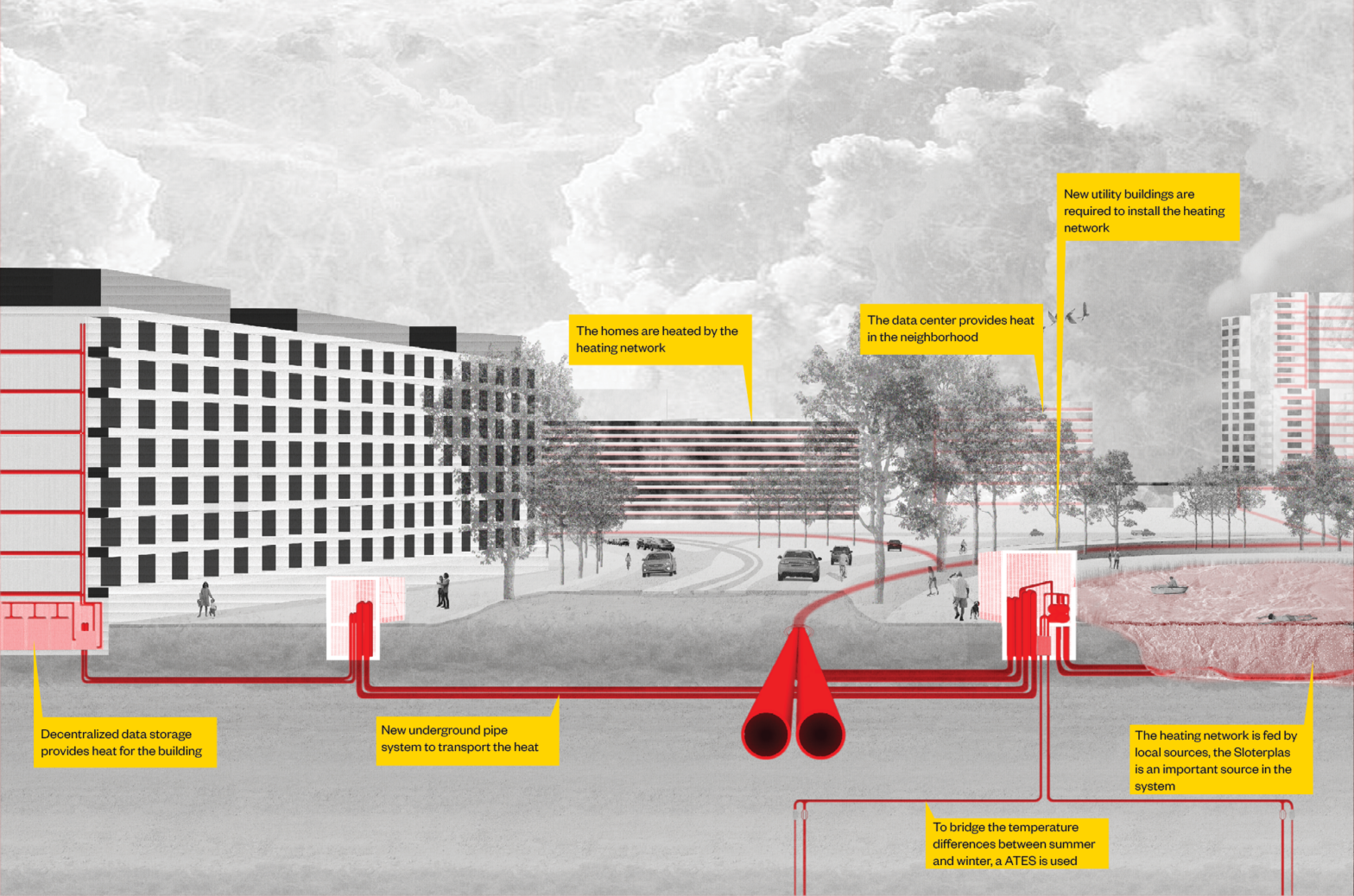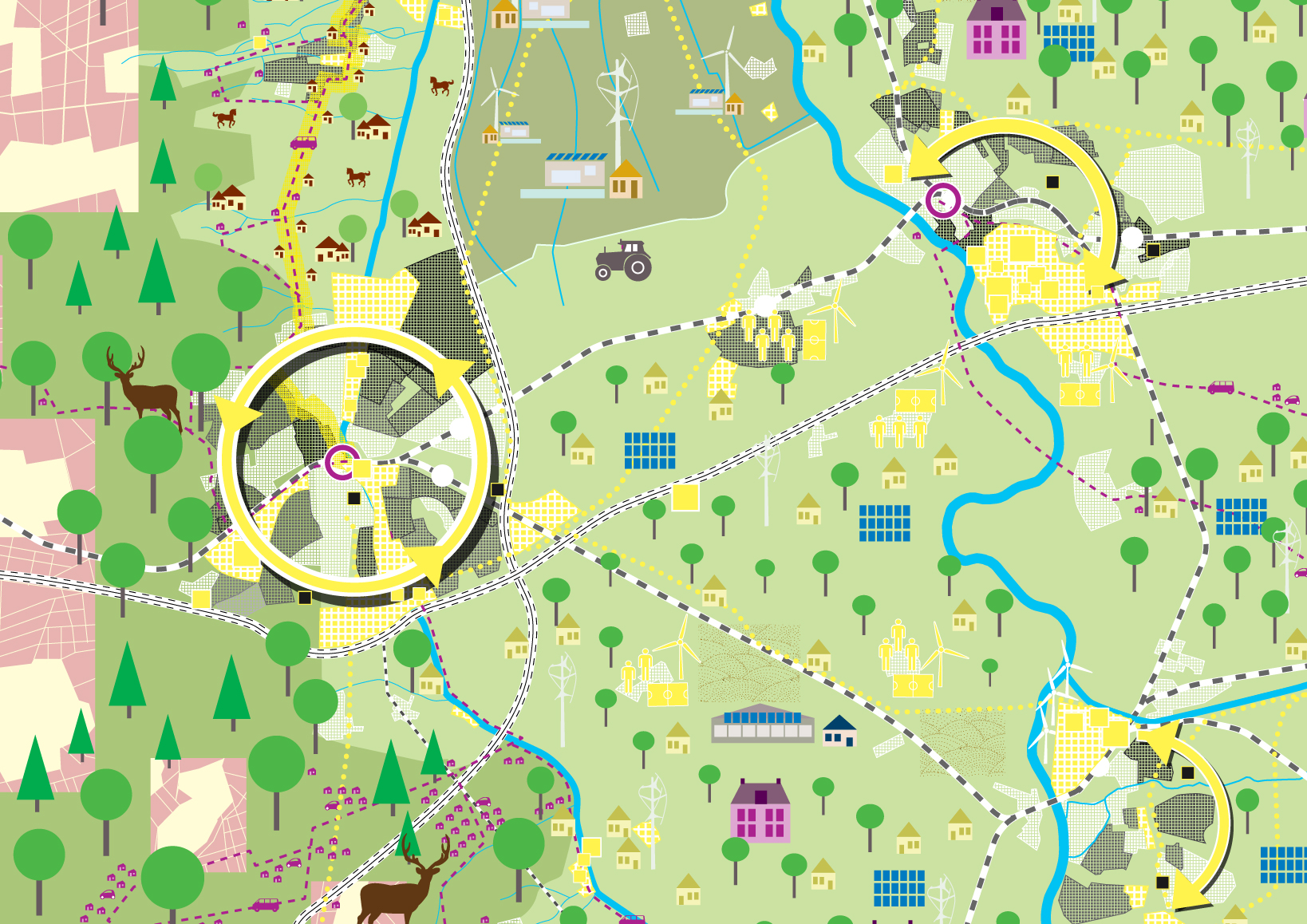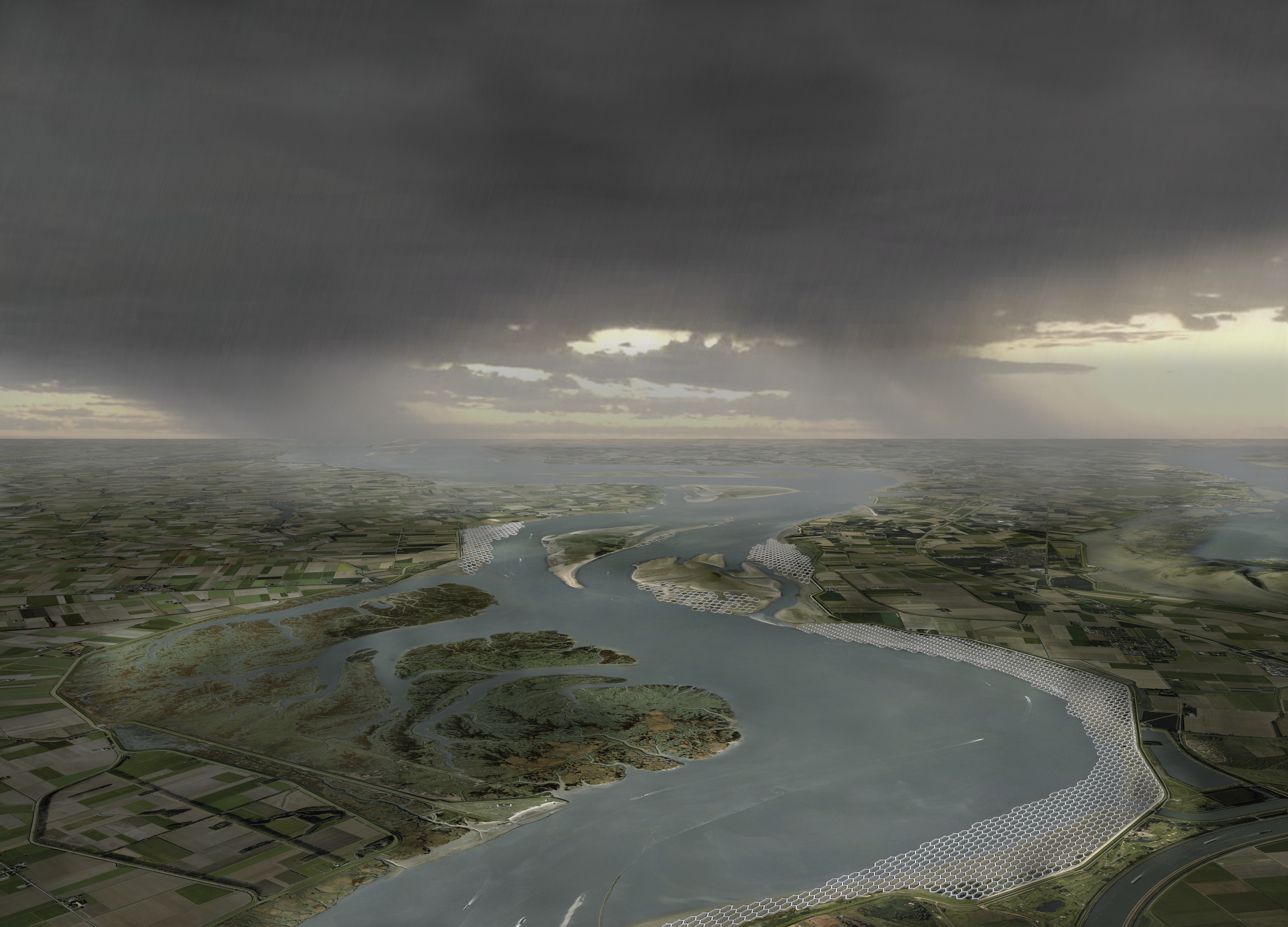Balanswijk
How to integrate circular energy systems into new urban neighborhood designs? Grid congestion has rapidly developed into a major obstruction for urban developments. A team of energy specialists from DEP and urban planners and architects from Bright, Urban Synergy and Generation.Energy was commissioned by Alliander to find a solution: the Balanswijk, a balanced neighborhood. Completely self-sufficient, without connection to the grid.

Why
The process of making our energy system more sustainable is reaching its limits. The grid is full and space for expansion is limited. In addition, other transitions also require space. In order to develop a new neighborhood in an area with grid congestion, all the necessary energy is generated, exchanged and stored locally in the speculative design of the Balanswijk. This goes beyond energy-neutral throughout the year: we aim to create balance at all times. Therefor, a clever integration of necessary infrastructures is required. An integral design of this neighbourhood can achieve a sustainable, liveable, healthy living environment for its inhabitants.

A neighborhood using biogas as energy source, the House of Energy is a space where waste becomes a shared resource. Organic material from kitchens, sewers, public spaces is collected here and transformed into renewable energy. It is a green meeting place for residents. People gather to borrow tools, manage street greenery, and pet the animals in the petting zoo. This biohub creates a space for initiatives like urban farming and a shared kitchen. This House of Energy creates a local, circular system that supports both the environment and the community.

What if the neighborhood is heated by a hot water tank? In this House of Energy hot water storage is a shared facility. By cleverly designing this space, it also creates a welcoming meeting place where the neighborhood can discuss energy. This space makes energy storage visible and thus contributes to raising awareness about energy consumption and the social aspects of energy in the neighborhood.

In a neighborhood with passive houses, where heating is organized privately, the House of Energy is located in the heart of the neighborhood. It serves as a hub where residents can access information from the service desk about how to live efficiently and comfortably in their passive homes. It also faces a solar square, making it a sunny meeting place. The House of Energy is easily accessible for pedestrians, cyclists, and motorists. Vans regularly deliver spare parts for individual home heating systems to ensure optimal maintenance.

In a neighborhood that uses a source network to bring the heat (and cold) to the homes and other buildings the House of Energy is a place where this system is accessible for the neighborhood. This House of Energy is a wellhead for the thermal energy storage system. Here, the energy system is clearly visible in the neighborhood and also serves as a meeting place and information center. Locals exchange information here about the best ways to live in a passive house, as well as about managing the collective heat pumps. It also houses one of the four wellheads, which are accessible to the public.
How
Our team went through three steps using a fictitious neighbourhood of 2,500 homes:
1. The spatial and energy requirements in m2 surface area. We’ve looked at the spatial allocation for healthy, liveable neighbourhoods for living, working, recreation, greenery, water, mobility, and energy too. This results in a spatial claim for energy production by wind turbines, solar panels and batteries for storage. The area needed is almost as large as all other functions combined.
2. Combining separate spatial requirements in smart combinations of functions and multiple use of space: solar panels on roofs, a wind turbine in a green recreational landscape, charging hubs and batteries in parking buildings or stacked as a lookout tower. By applying current design insights to the Balanswijk, we have managed to reduce the spatial claims of energy.
3. Remaining challenges. We have not yet found a conclusive solutions for the spatial claim of energy storage. However, we do provide an indication of the effectiveness of various measures. The big challenge is the heating supply during “elfstedenwinters”, when it is cold for a few weeks and little sustainable energy is available. The remaining challenge can be seen in the large battery installation next to the neighborhood.
What
The Balanswijk generates, exchanges and stores all energy locally. It is a neighbourhood where residents live comfortably and healthy while taking into account the available energy to keep the neighbourhood in balance. 70,000 square metres of living space, fifteen percent water area, 2,500 (mixed) homes via the current BENG standards (Nearly Energy Neutral Buildings), and 146,000 square metres of greenery. To make this neighborhood self-sufficient, a simila sized area is needed for energy: 282,000 square metres for one wind turbine, 56,000 square metres of solar panels, 147,000 square metres for energy storage.
In the proposed design, we show how this spatial puzzle can come together in a liveable neighbourhood. The challenge still lies in seasonal storage of heat for times when there is a high demand for energy or heat, but few possibilities for energy generation. This seasonal storage has been translated into numbers of batteries for the Balanswijk. No less than half a shipping container per home. To reduce this spatial claim, four strategies have been introduced: (1) reducing energy consumption, (2) multiple use of space and (3) new energy storage techniques and (4) energy shifts at critical moments. These ensure a decrease in required storage. Examples include passive house buildings, smart (bidirectional) charging for vehicles, collective heat supply at block level and also reducing the energy consumption of residents in a severe winter.
This first Balanswijk is a version without heat source nearby, such as geothermal energy or industrial residual heat. Currently, we are designing Balanswijken with alternative heat sources.








More information:
https://www.liander.nl/voor-projectontwikkelaars/balanswijk#uitdaging
https://stadszaken.nl/artikel/6436/waar-komt-de-eerste-balanswijk-van-nederland
https://www.nu.nl/klimaat/6322037/de-woonwijk-van-de-toekomst-heeft-het-overvolle-stroomnet-helemaal-niet-nodig

 Power to the People
Power to the People
 Shifting gears
Shifting gears
 Energetic Eerbeek
Energetic Eerbeek
 Stroom Westerschelde
Stroom Westerschelde